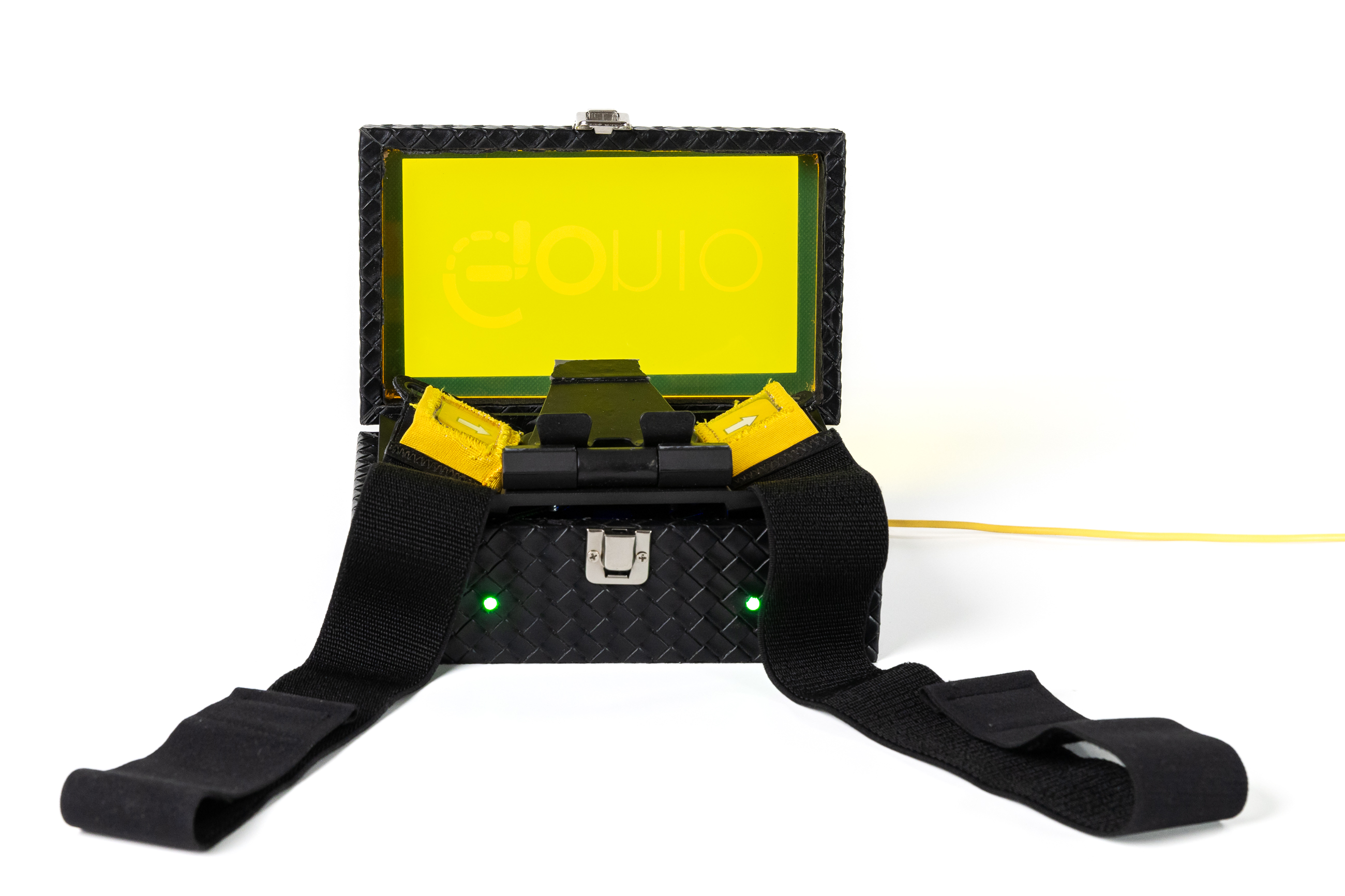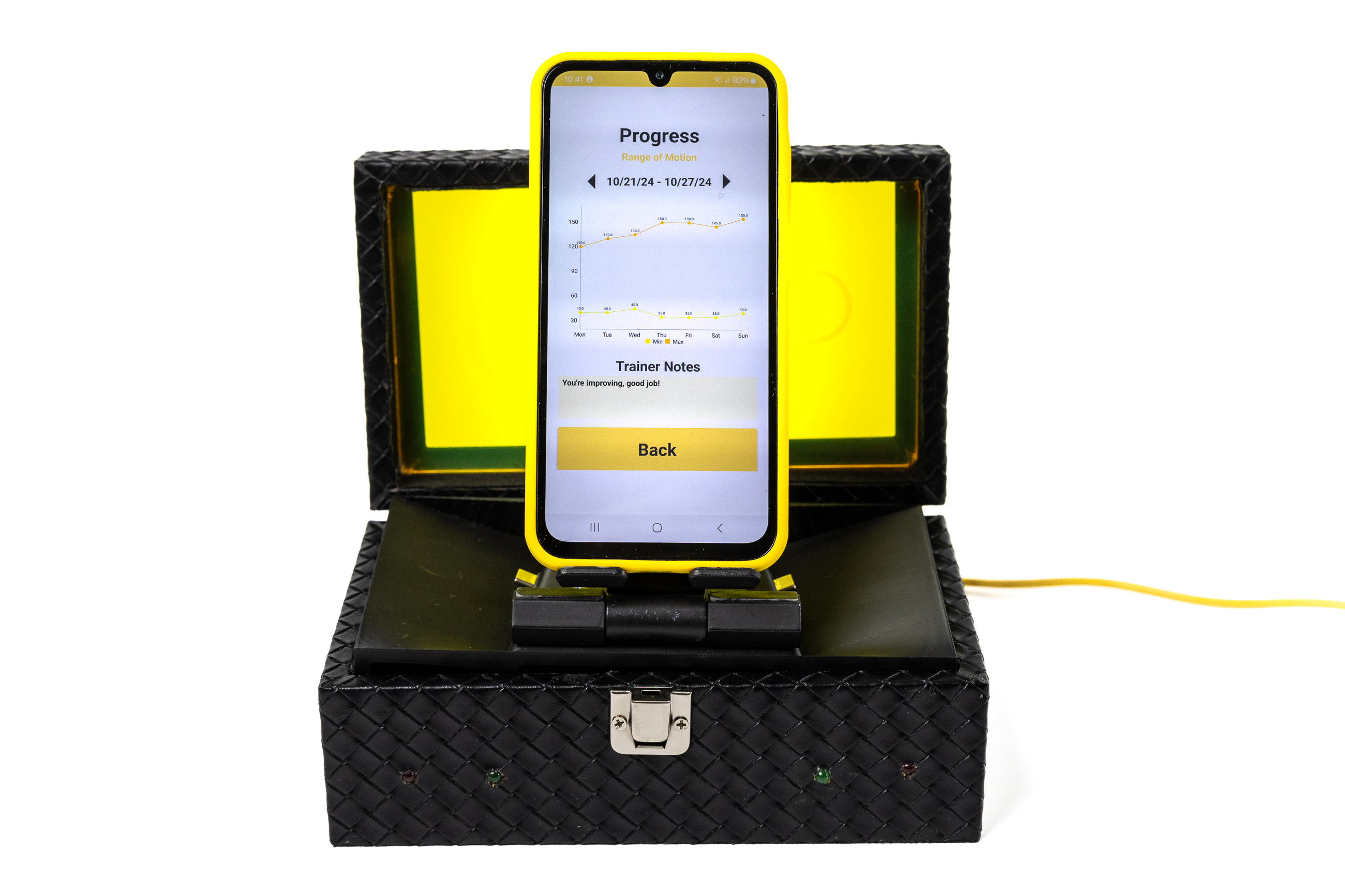2.009 is MIT's famous Senior Mechanical Engineering Capstone class, where students are put into teams of ~15 who work together through the product development cycle from ideation, design, to alpha prototype. Our theme this year was "Balance"!
I was on Yellow Team and I served as 1 of 2 system integrators. As described by the 2.009 website, "the system integrators will assume a number of coordination and integration functions during the project, from both a project management and technical design viewpoint. While they are not the owners of the design vision (the team is), they are the hub of team communication."
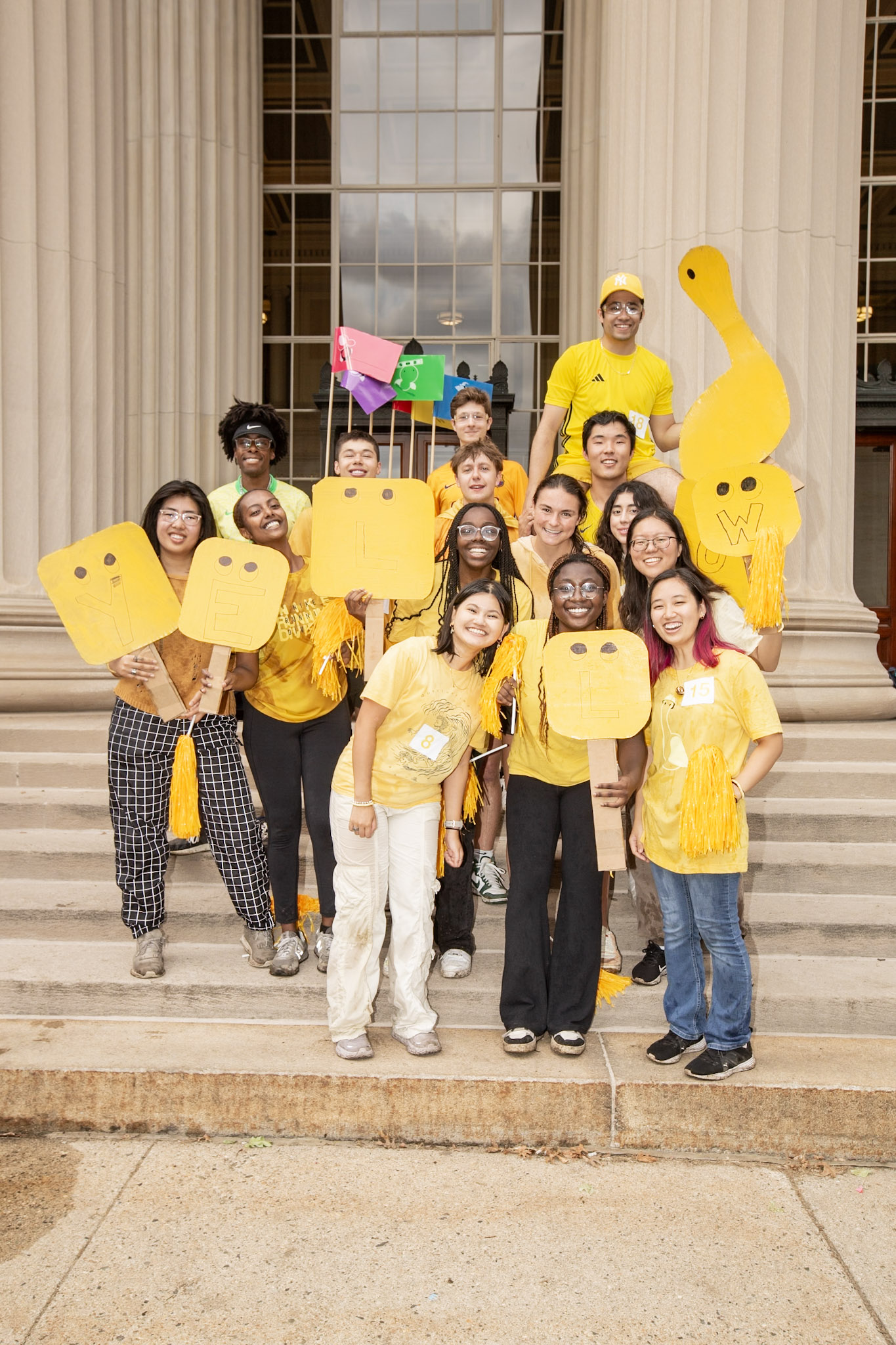
The system integrator have management responsibilities that include:
Coordinating weekly team meetings, agendas, and goals.
Structuring the process to define task forces.
Ensuring that the meeting minutes and team's Slack workspace is properly maintained.
Facilitating communication within and between team task forces.
Forming and maintaining the overall project schedule in consultation with the team lab instructors.
Spearheading the development of the product contract and specifications.
Forming and maintaining a system image of the product as it is designed.
Helping with the physical integration of product subsystems.
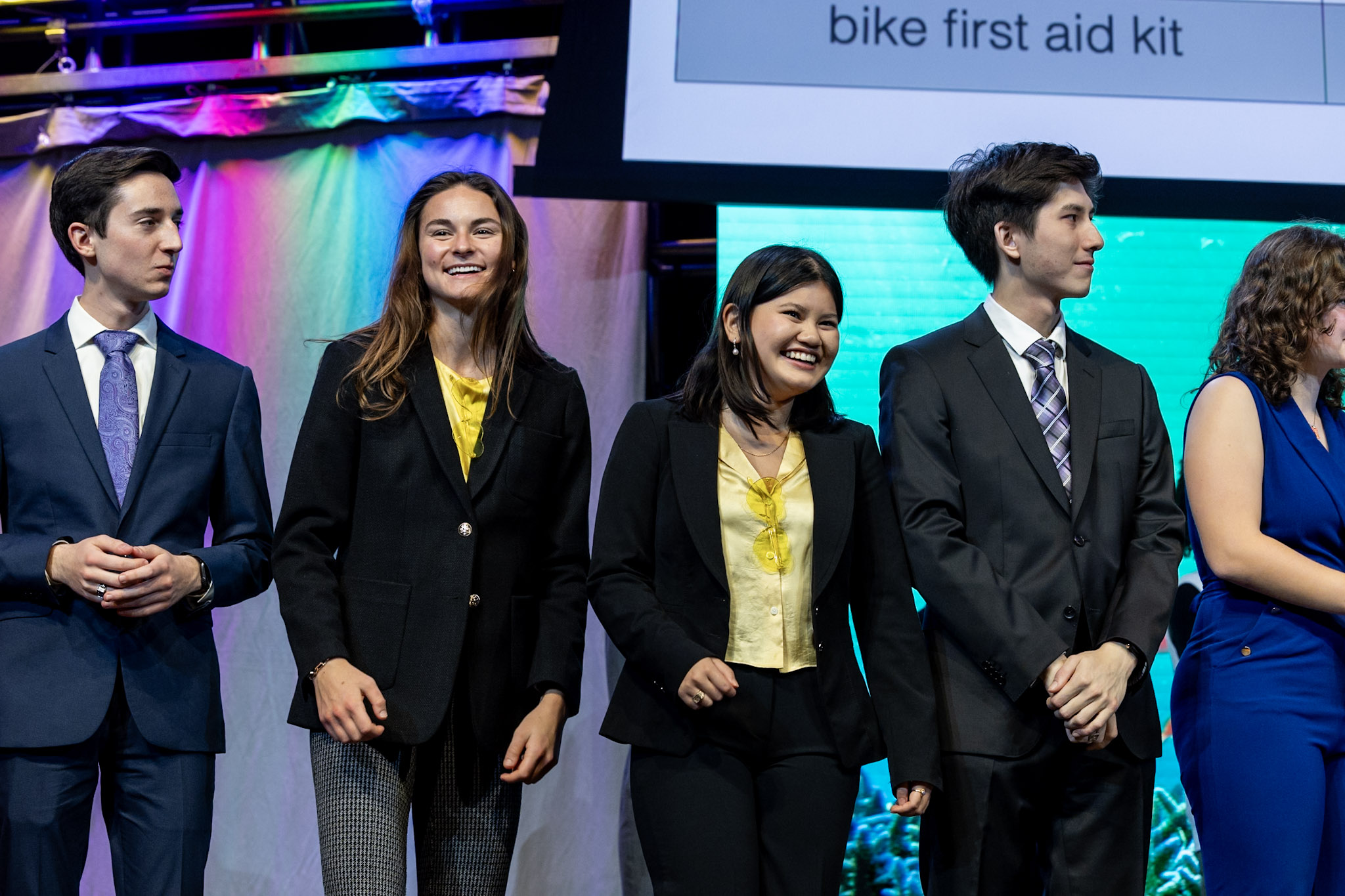
We started out with over 100 product opportunities, ranging from categories of home-use, medical, to mobile safety. From those concepts, we split into subteams and narrowed down to six compelling problems/opportunities to explore, focusing on unmet needs rather than solutions. I specifically worked on the subteam of "accountability & independence in medical care." Each team delivers elevator pitches for each opportunity during a 6-minute presentation to showcase their most promising ideas, derived from research, observations, and brainstorming. This helped us refine problem identification skills and provides exposure to opportunities being considered by classmates.
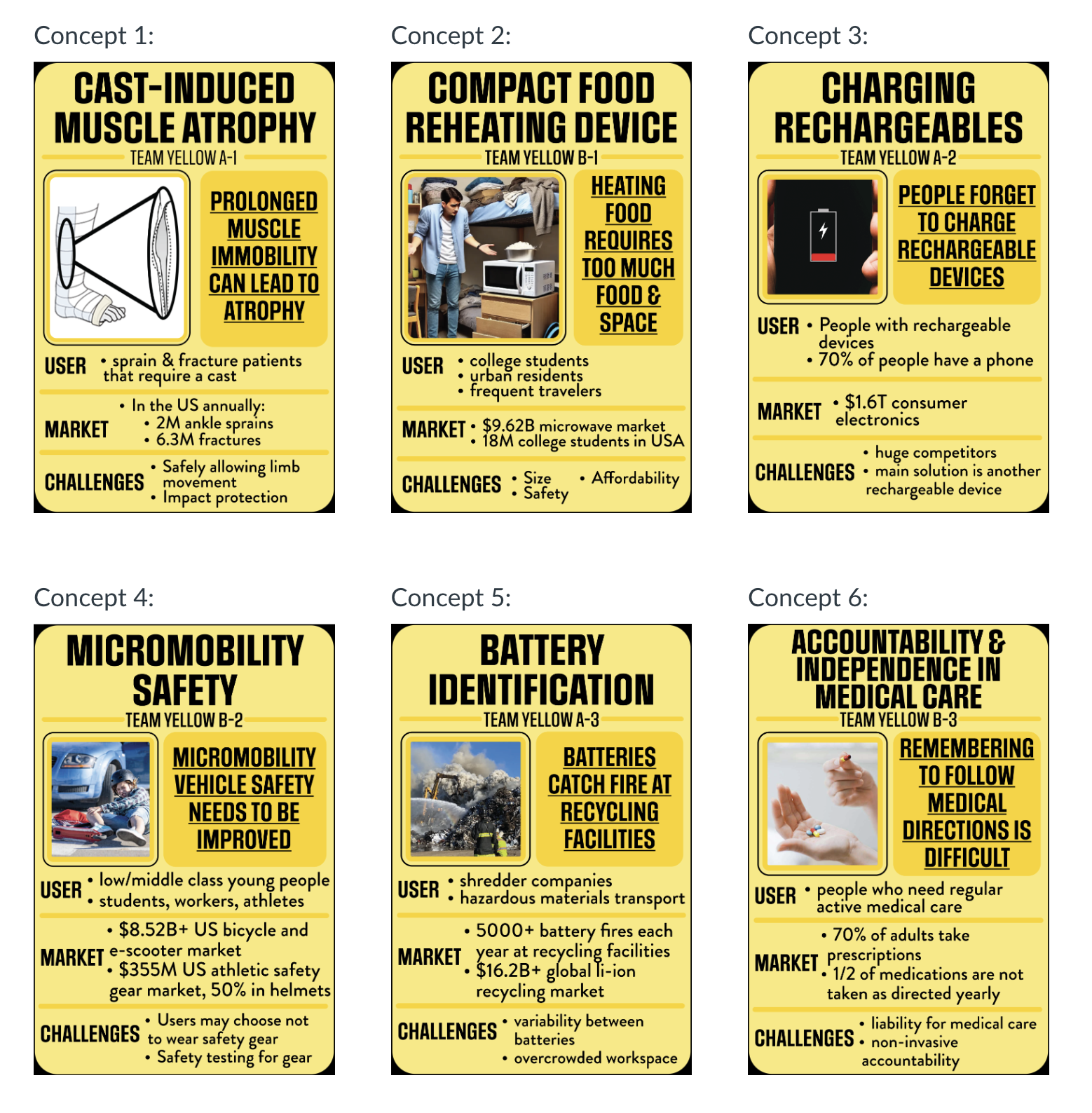
We then developed four product concepts and assess their feasibility by identifying key risks and building models (physical, numerical, or analytic) to address them. We evaluated each concept based on feasibility, market potential, user needs, and unique value propositions. This includes conducting market research, benchmarking, and gathering user feedback to create a user persona. Findings from these analyses guided our selection of one concept to pursue for further development.
For our feasibility analysis, we developed four concepts: Hands-Free Crutch, Fire Suppression Systems in Shredder Facilities, Retractable Training Wheels, and Smart Cast to help with muscle atrophy. I contributed as part of the Hands-Free Crutch subteam, focusing on the limitations of traditional crutches in mobility and convenience. We conducted market research on the crutch industry and analyzed the user space by examining injury types. A key insight was the distinction between the consumer persona (doctors prescribing the device) and the user persona (patients using it), which shaped our approach to product development.
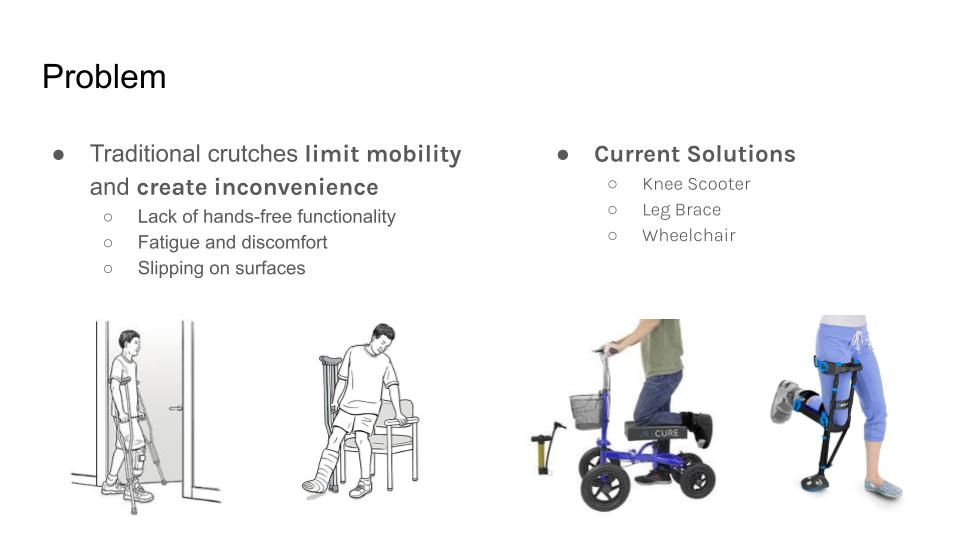
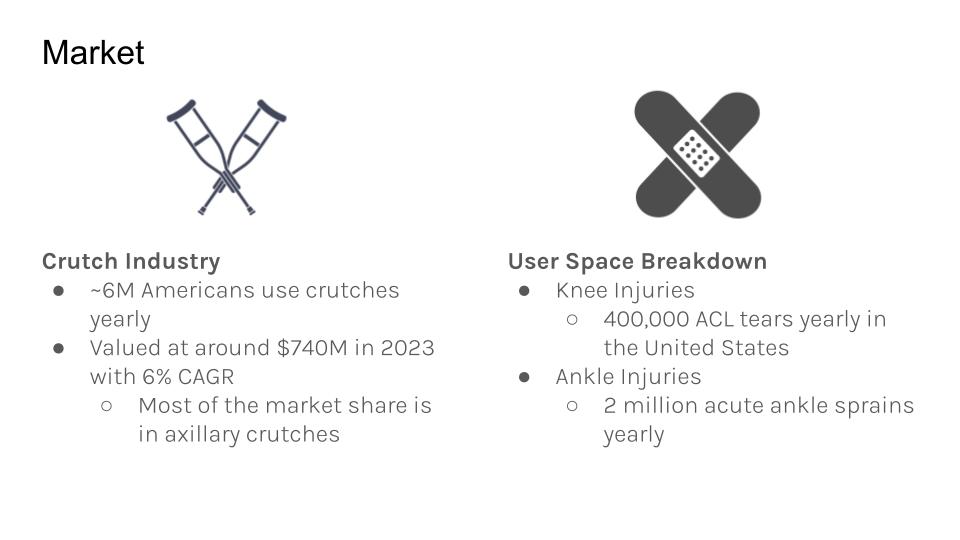
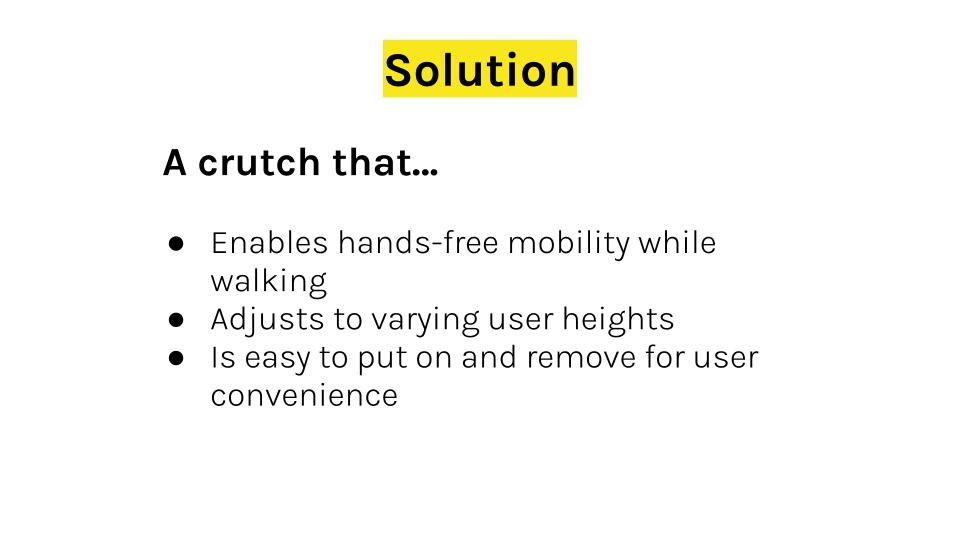
After evaluating our four concepts and conducting user interviews, we chose to focus on the Smart Cast, which addresses the clear need to prevent muscle atrophy during recovery. This led us to explore the broader rehabilitation space, where we identified accountability in physical therapy—especially post–total knee replacement—as a key challenge. With a $9.4B market growing at 5.1% annually, we saw potential in improving recovery outcomes through consistent physical therapy, which can speed up healing by 20–30% and reduce long-term costs by 10–15%. However, current barriers like limited mobility, scheduling issues, and high in-clinic costs reduce adherence. We aimed to develop a wearable that tracks PT exercises and improves patient–therapist communication.
We focused on developing our most critical module: the sensing technology for detecting patient exercises by measuring knee range of motion. We tested various sensors and ultimately selected an IMU for its accuracy and ease of integration. Additionally, we explored Bluetooth connectivity to enable data transmission from the patient to the physical therapist. This milestone allowed us to refine our product architecture, validate high-risk components, and gather valuable design feedback through physical prototyping.
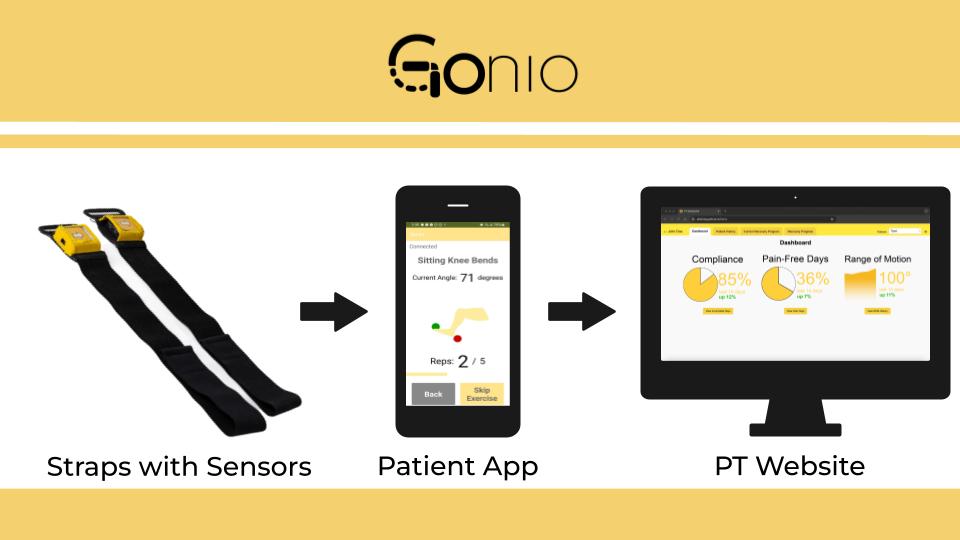
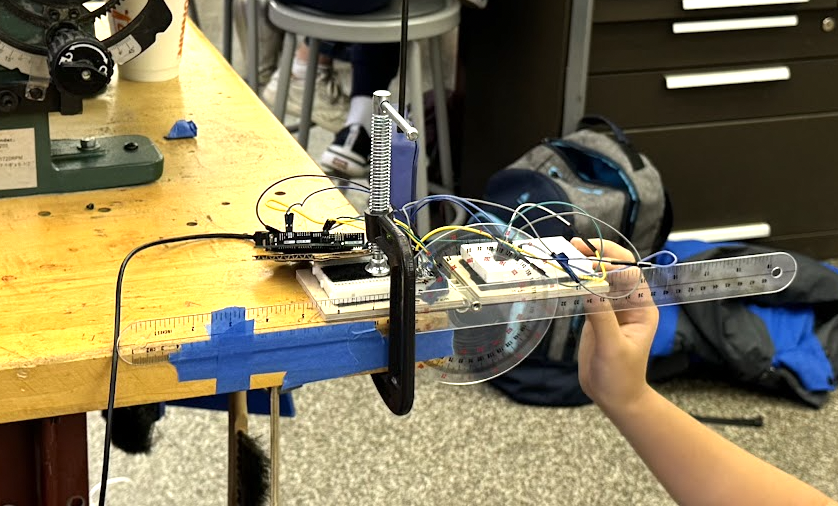
The Technical Review assesses the functionality of each team's final prototype and provides critical feedback to guide improvements before the final presentation. We had to present a fully functional, testable prototype, demonstrating that all technical features are operational. Addressing key technical challenges early was essential for allowing time to debug and have a successful system integration.
To get a working prototype, we divided into several subteams: Straps, Sensors, App, User Interviews, and Market
Straps: We iterated through multiple strap designs to securely hold the sensor unit while ensuring comfort and ease of use for the wearer.
Sensors: We evaluated both raw IMUs with custom calculations and pre-packaged IMUs, ultimately selecting the latter for smoother integration.
App: We built a simple application that displayed knee angles based on IMU data, allowing real-time feedback.
Market: We conducted research to inform our business strategy and identify a viable go-to-market plan.
User Interviews: We tested our prototypes with users to gather feedback and iterated based on their input to better address user needs.
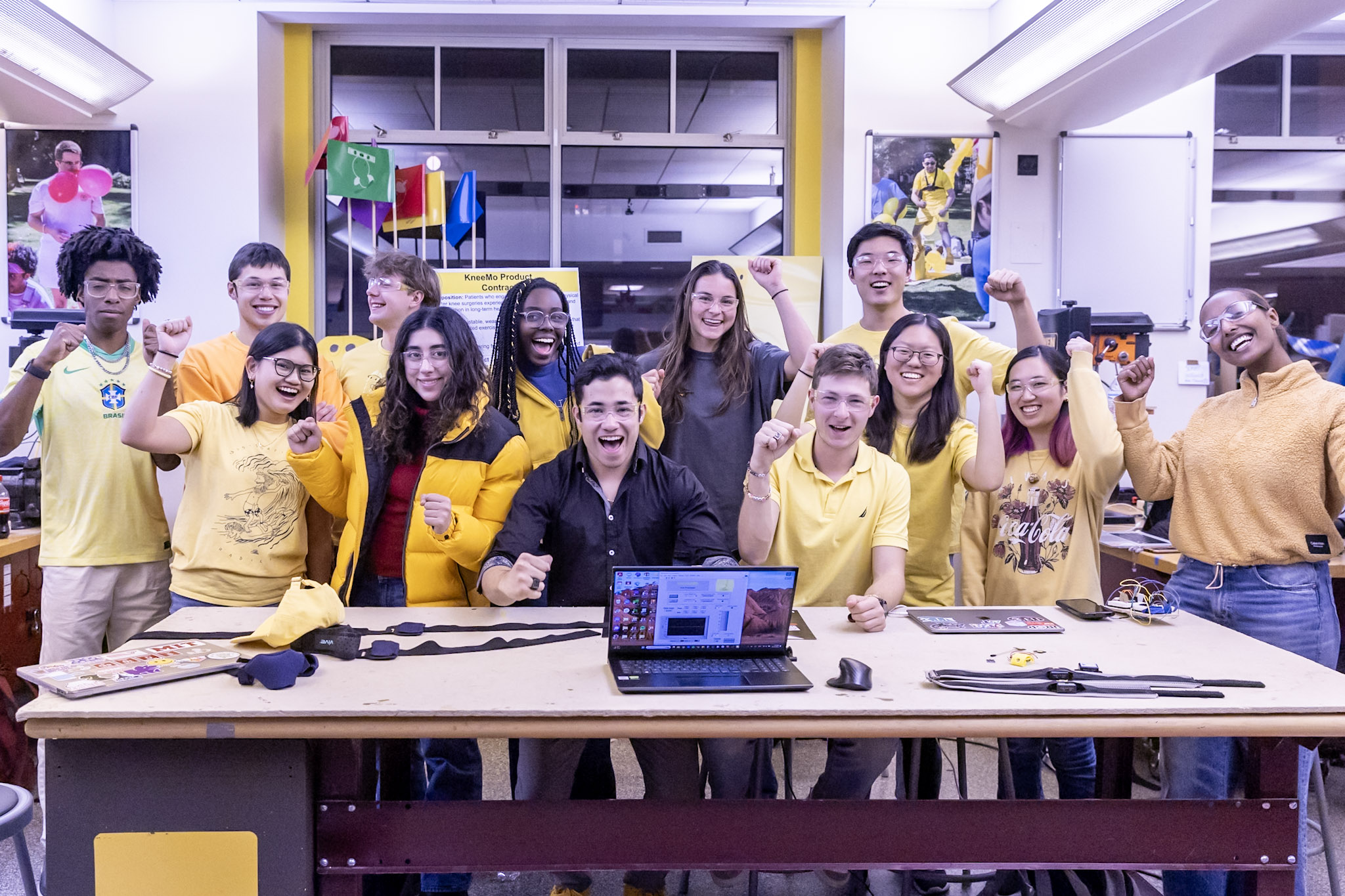

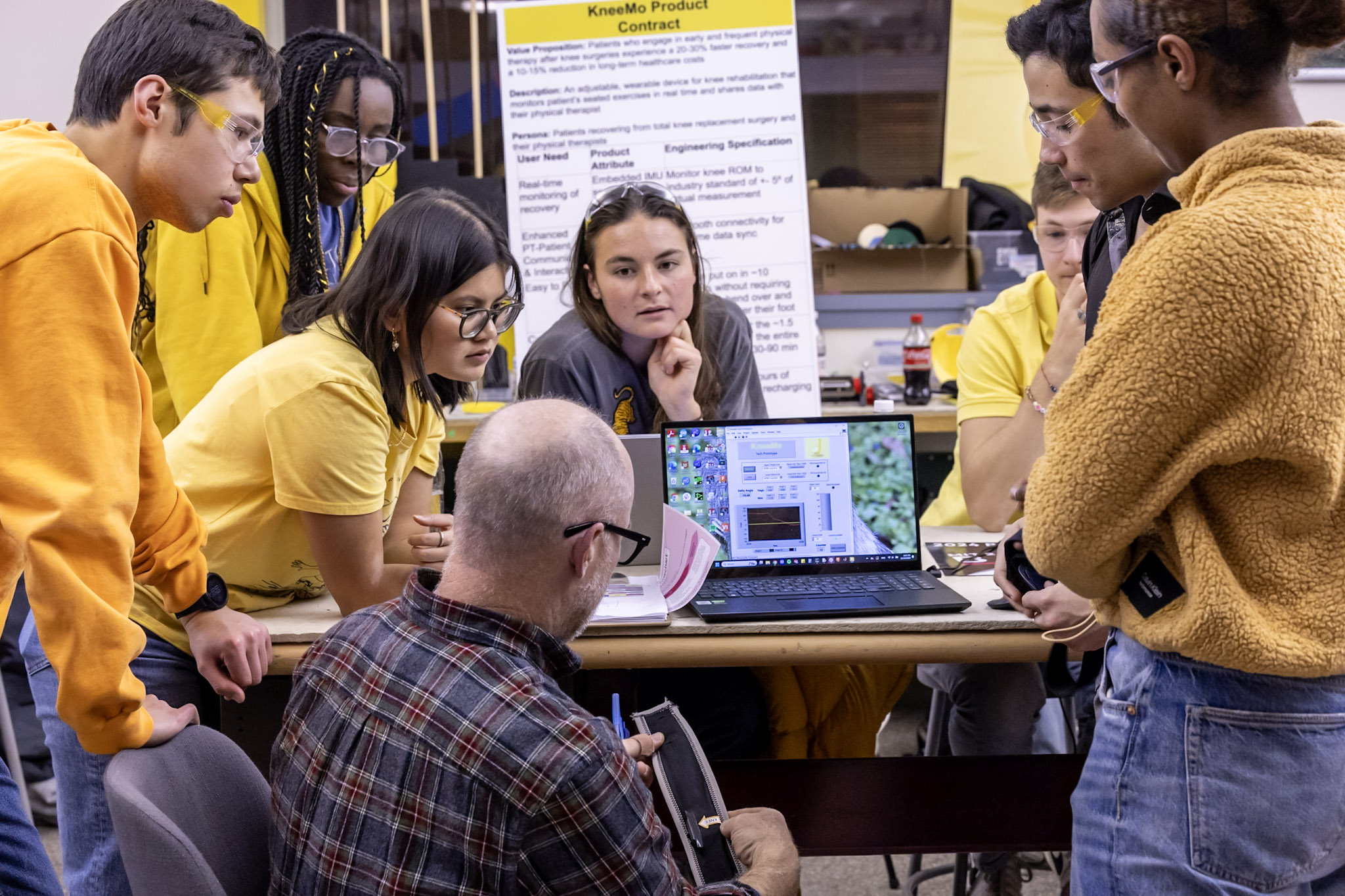
The Final Presentation was a formal product launch event attended by classmates, instructors, industry guests, and the broader MIT community. Each team showcased their work through a 7-minute polished presentation, demonstrating their alpha prototype—a detailed, looks-like and works-like version of the final product. The presentation highlighted key design merits, technical innovations, user impact, and potential market realization. We presented our product to a live audience of ~1,000 people with an online audience of ~10,000!!
I was lucky enough to have been chosen as one of the presenters, which was a rewarding opportunity!
Watch our presentation here @ ~43:34.

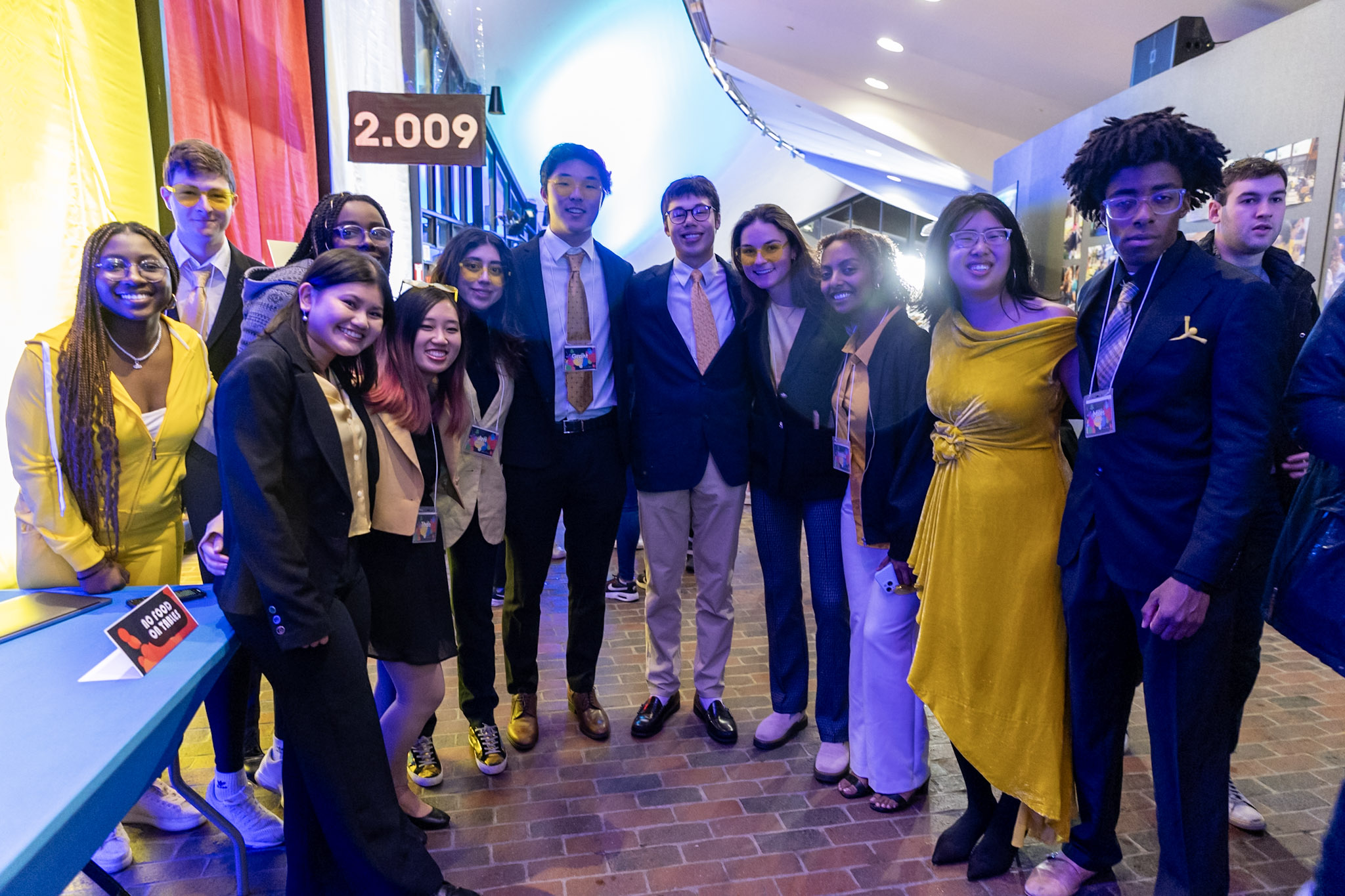
Our final product is Gonio: a rehabilitation system meant for recovering total knee replacement surgery patients to be able to remote physical therapy.
The Gonio System contains 3 components: motion sensors that attach to the body, an associated app that reads the sensors and guides the user through their exercises, and a website that allows PTs to monitor patient progress and provide timely, remote feedback.

